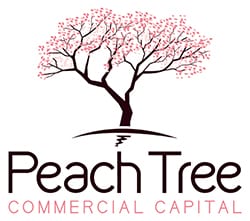When you’re looking to aggressively expand a real estate portfolio, developing a well-structured capital stack can position you for success.
The capital stack is the financial structure for your commercial real estate deal. It contains all of the investments used to make the deal happen, including both the debt and equity.
The stack is most often represented as layers that reflect the different levels of commitment and planned return for investors. This includes those contributing funds for the short, mid, or long-term for the purchase and management or resale of the property. Each investor in a stack will want to know the overall composition of the capital stack because it impacts their level of risk at their chosen level of commitment. But before we get too deep into the risk assessment, let’s take a look at the overall makeup and goals of a capital stack.
Balancing the Stack
Raising capital for CRE investments is typically a balance between taking on debt and selling equity. There can be several investors, and therefore several layers to your capital stack. For simplicity’s sake, let’s cover the four main types. They are common equity, preferred equity, mezzanine debt, and senior debt. You can visualize them in layers, from top to bottom. The top of the stack has the highest potential returns, but the highest risk. The bottom of the stack has the lowest possible risk but commonly, the lowest returns.
Common Equity
At the top of the capital stack are the equity partners at the heart of the deal. They hold what’s called “common equity.” Most CRE acquisitions are structured under a holding or management company. This is typically an existing entity but can be newly formed arFsuound a single, high-value property as well. The skills and number of equity partners involved at this level are important in building trust for investors at the other levels in the stack. They lead the business plan, structure lease terms, and market the property. Investors at the common equity level are the last group to be paid from cash flow or property sale, but can see the most gain (in terms of both cash flow and property appreciation) from a successful deal.
Preferred Equity
Below the common equity position is the preferred equity position. These investors incur less risk but have a more clearly defined and capped potential return on investment. This money is a lot like a loan in that it pays based on a variable or fixed rate over a fixed term, but preferred equity investors can convert their shares to common equity if the project falls into default. They can even take over control from the owners in the common equity position.
Mezzanine Debt
Mezzanine debt holders are the next position down in the capital stack under preferred equity. Their risk profile is less than the equity positions above, but, because the dollars provided are in the form of a loan, their return is more clearly defined. Loans at this level are usually more expensive than at the senior debt level, which we’ll cover below. When investors are paid back, debt holders at the mezzanine level get paid second. Mezzanine debt can be unsecured and comes from smaller, private companies. Sometimes, interest-only payments are made from the time the loan closes. Additionally, mezzanine funding may have a right to convert some of the debt into equity, blurring the lines between mezzanine and preferred equity.
Senior Debt
Senior debt holders are at the bottom of the capital stack and hold the most stable, safe position. Because of that, the interest rates on Senior Debt are lower than on mezzanine debt or preferred equity. When the property is sold or refinanced, the debt holders at this level are the first in the capital stack to get paid. Senior debt lenders are usually commercial banks and larger financial institutions. These institutions often contribute the largest portion of funding in the capital stack. To determine the loan amount available, traditional lenders focus on the property’s Debt-Service Coverage Ratio, which is the relationship between the money owed on the property and how much cash flow the property generates.
Goals
Now that we’ve visualized the capital stack, how does this financial structure benefit investors in a commercial real estate investment deal? In a nutshell, its goal is to minimize risk and maximize return for all stakeholders in unique ways at each level of the stack.
When investors purchase a property, such as an apartment complex, office building, or retail center, they are buying the property’s future cash flow and appreciation potential. Lower levels in the capital stack receive more clearly defined returns in return for lower interest rates, while higher levels risk greater variability, but also higher interest rates, or opportunities for long-term ownership and managerial control.
If the project fails, however, no one investor bears the full cost of the loss, as they would if they purchased the entire property outright. In addition, because everyone has an interest in seeing the project succeed, there is more likelihood of negotiation and adaptation to maintain profitability at each level of the stack.
Equity Alternatives
Sometimes you don’t want to give away equity to the top layers in the capital stack, but struggle to get financing without partners. In that case, there are several alternatives. Small Business Administration loans are one good option. An SBA loan will take the investor’s down payment requirement from 20%-30% of a typical CRE mortgage down to 10%.
If you intend to “fix & flip” or “fix & hold” the property, you can go with a lender that underwrites based on the ARV. Instead of financing at the property’s current value, the lender looks at what the property will be worth once you’ve upgraded. This strategy lets you cover the costs of the purchase and repairs while dropping your down payment amount. If you were to finance based on LTV, you cover just the price of the initial purchase with no capital leftover.
Another option is a portfolio loan, which ties financing for the new property in with the property you already own. A portfolio loan also allows you to purchase multiple properties at once without seeking separate loans for each. That saves on finance charges and lowers the interest rates you’re paying on the existing properties.
Whether you’re building a capital stack or seeking alternatives, you’ll want the help of a qualified broker. Loan brokers experienced in the commercial retail sector are adept at creating win-win relationships between lenders and investors at each level of the capital stack. Reach out to our team to discuss your commercial real estate investment goals.

